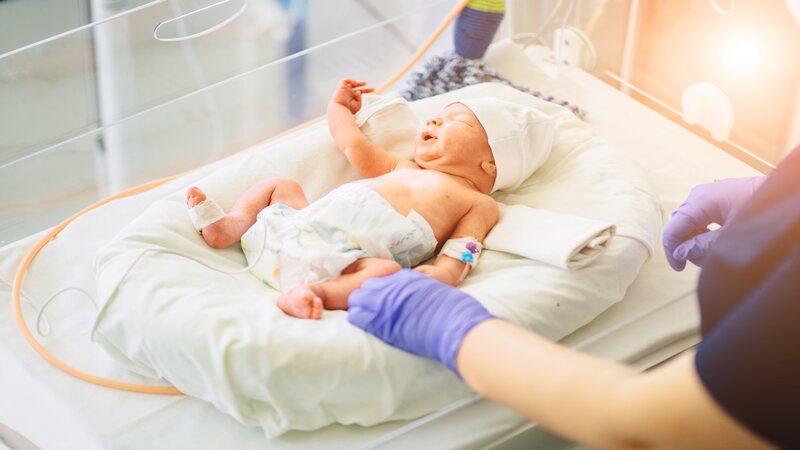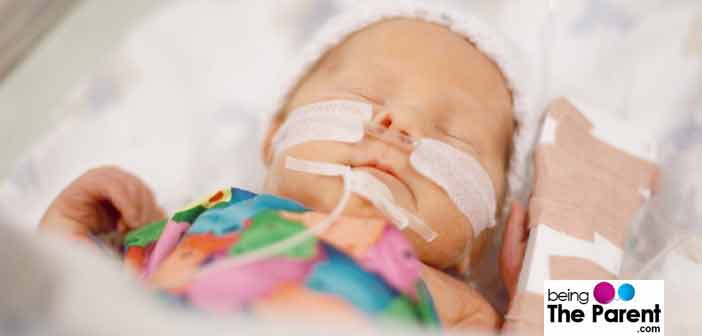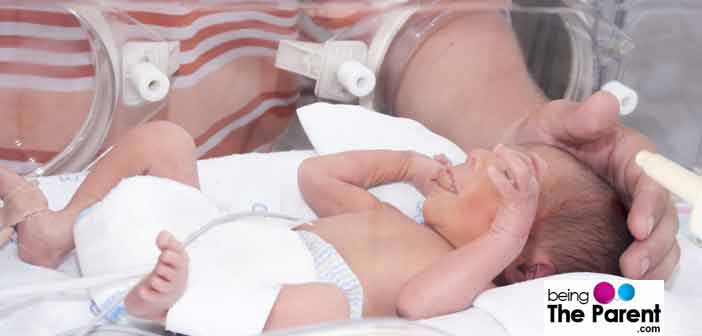
There is no easy way to put this. Pre-term birth is a leading cause of infant mortality. However, parents should actually try to be positively realistic than being negative. Many babies survive despite the toughest challenges. Medical science has progressed much. In fact, specialist surgeons can operate on babies as young as within three months! Obviously, that is an urgent scenario, but the point is that all help is there to help your baby to survive. Understandably, it is difficult to relax when your precious baby is sleeping in the incubator with all those attached wires and tubes. Still, your panicking is not helping the baby either.
If you are dwelling too much on statistics such as survival rates and such, you may be actually stressing yourself. Statistics can be illusionary and real life is real life! Simply avoid thinking that the baby has only 70% chance of survival or whatsoever, despite what your doctor tells you. Just have hope that things will be alright. This will give you the confidence to make sure that you are trying your best to save the baby.
Babies born pre-term before 28 weeks
Naturally, the challenges are greatest with babies born so early pre-term. The RDS or the Respiratory Disease Syndrome is common in this phase. It happens because the lungs are still a little undeveloped and they lack ample natural liquid surfactant to stay expanded. Depending on the health condition of the little one, doctors employ several treatments.
Apart from setting up a ventilator, the facility will arrange a suitable artificial surfactant. Try not to worry because the undeveloped lung or heart is totally natural when the baby has not been able to complete the growing phase in your womb. It grows eventually.

Babies born pre-term between 28th and 32nd weeks
Babies born in this phase are usually healthier than the early preemies. However, it depends and every baby is unique. In fact, it is not even imperative that a pre-term baby will necessarily have undeveloped organs. In the deliveries where the baby was birthed naturally without the doctor deciding to initiate the process, the little ones are often surprisingly healthy internally.
Of course, they are still very fragile, like a butterfly, but all you have to do is arrange good medical care. Nevertheless, infections also happen. Neonatal jaundice is seen in many babies. It is fully treatable and babies recover well.
Besides the aforementioned RDS, babies may develop BPD or Bronchopulmonary Dysplasia. It is another chronic lung condition and the clinic arranges a steady oxygen supply in the incubator to take care of this. Jaundice happens due to an excess secretion of a body substance called Bilirubin, which turns the skin yellowish. The treatment process includes placing the baby under a special illumination after covering his eyes.
Speaking of eyes, ROP or Retinopathy of Prematurity also happens in pre-term babies. The retina is not fully formed. Again, this is a development stage, and the eyes become complete eventually. All you have to do is to ensure that the baby is getting proper care and nutrition (especially breast milk).
Babies born pre-term between 32nd and 37th weeks
Pre-term babies in this phase generally have much less health issues. In fact, you may be able to take your baby home by the original delivery date. They may have the health issues mentioned above and other problems, but they may be healthy overall as well! There is no definite time for the incubator period as well. Your doctor is obliged to make sure that the baby will be safe outside the hospital before issuing a discharge letter.
When you are taking the baby home, make all the necessary safety arrangements. You may need to train yourself on resuscitation in case the baby was born with a respiratory problem. At home, make double triple sure to keep infections at bay. Carry on breastfeeding just as long as you and your baby are certain that it is no longer needed.

Assert your motherhood
Instead of being anxious, be strong and assert your role in caring for premature babies. Kangaroo care is a well-researched medical practice where it is proved that skin-to-skin care from the mother actually helps the baby to grow faster. Make sure that your doctor understands this and allows you to hold your baby in person whenever possible.
Unfortunately, many clinics are slow to recognize these emotional aspects of baby care. It should be your responsibility to speed up their learning, so to say. Dig online resources to find validating resources on the benefits of Kangaroo care and establish your need.
Another very important thing is to be able to convince your doctor to allow you to breastfeed your pre-term baby. Several misconceptions are prevalent. For example, some clinics insist that the baby should first learn to take milk by holding the bottle. This is absurd! The baby should first learn to suckle! The milk secreted from your body is naturally customized especially for your baby. Milk from pre-term mothers has more proteins and immune elements. In addition, mother’s milk is genetically compatible with the baby’s body and is also digested very well.
Of course, sometimes it is practically impossible to take your pre-term baby to breast. The baby may not even have sufficient muscle strength to suckle! Even then, the best medical facilities collect mother’s milk and provide it as a drop-by-drop nutrition. Always talk with the doctor as long as the clinic consents to you. You simply cannot take chances, be formal, or be shy here!
